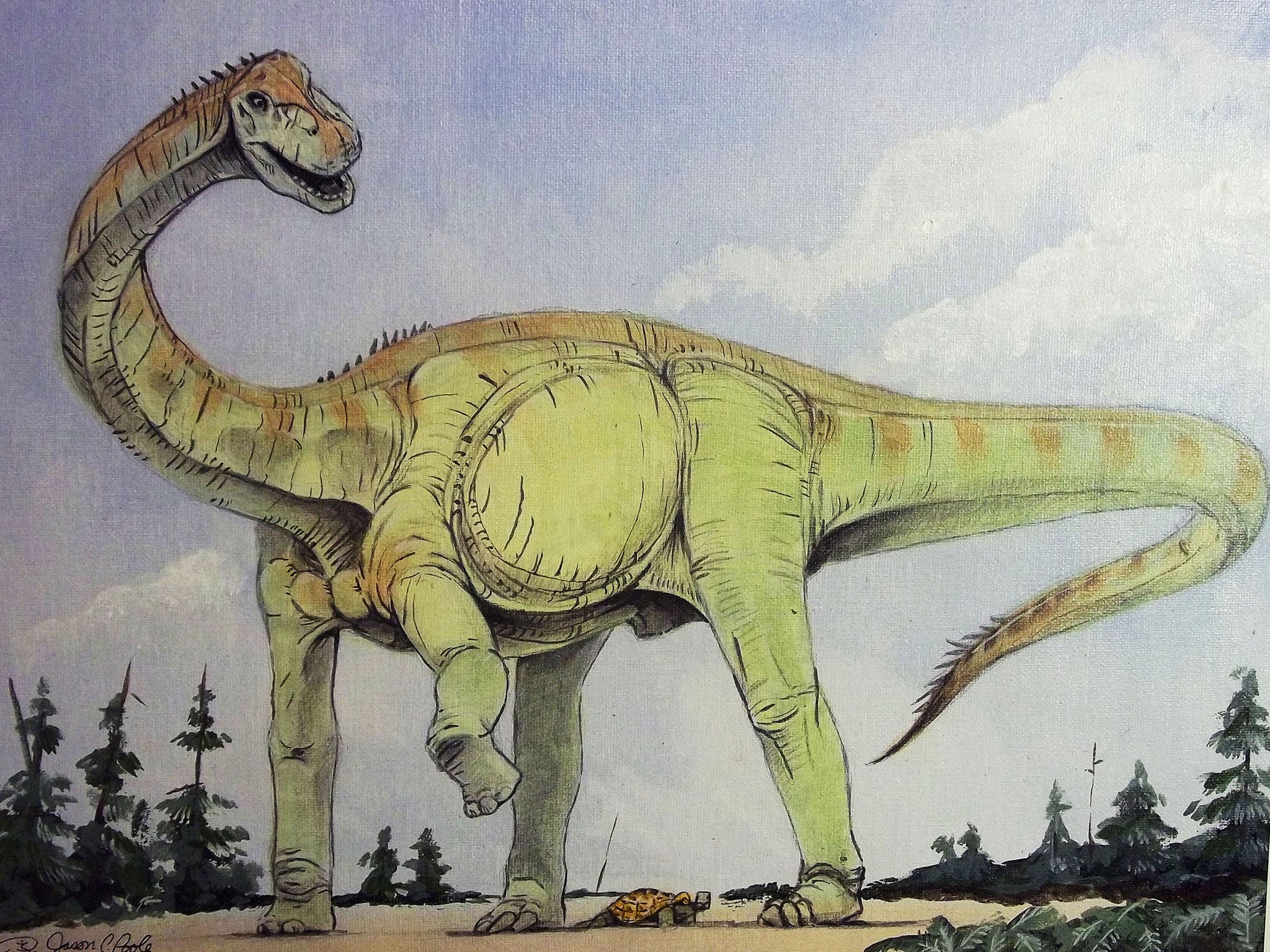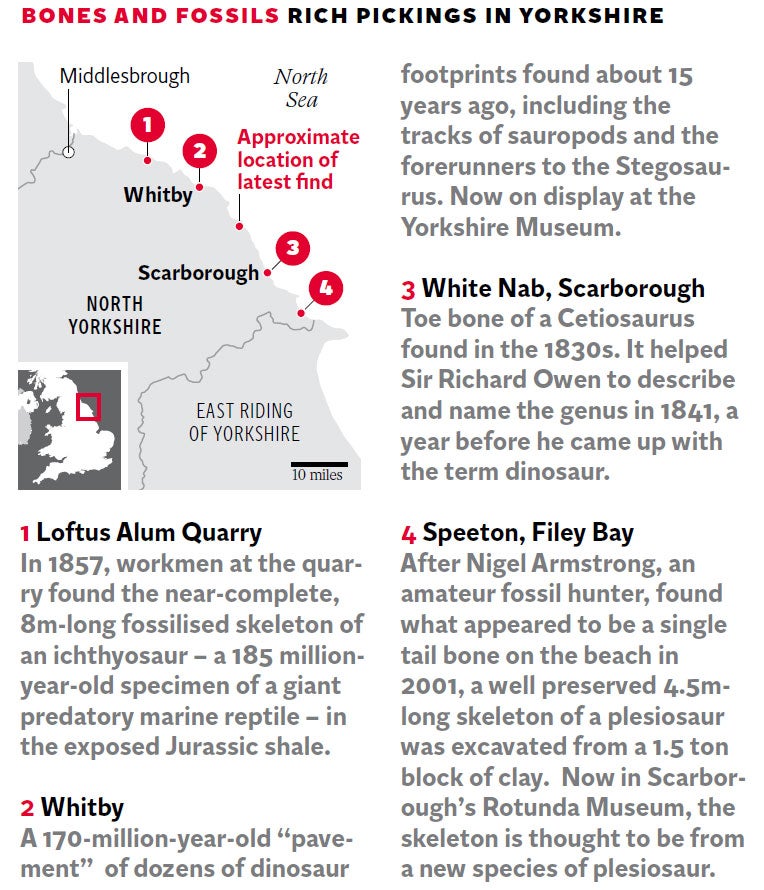Dinosaur vertebra discovered in Yorkshire revealed to be 176 million years old
It belonged to 'Alan', the oldest sauropod ever found in the UK

Your support helps us to tell the story
From reproductive rights to climate change to Big Tech, The Independent is on the ground when the story is developing. Whether it's investigating the financials of Elon Musk's pro-Trump PAC or producing our latest documentary, 'The A Word', which shines a light on the American women fighting for reproductive rights, we know how important it is to parse out the facts from the messaging.
At such a critical moment in US history, we need reporters on the ground. Your donation allows us to keep sending journalists to speak to both sides of the story.
The Independent is trusted by Americans across the entire political spectrum. And unlike many other quality news outlets, we choose not to lock Americans out of our reporting and analysis with paywalls. We believe quality journalism should be available to everyone, paid for by those who can afford it.
Your support makes all the difference.Scientists have revealed that a prehistoric 15kg vertebra has been found to belong to the oldest sauropod [long-necked, long-tailed, tiny-headed] dinosaur ever discovered in the UK.
“Alan”, the 176 million-year-old dinosaur, has beaten the cetiosaurus, previously Britain’s oldest sauropod, by about five million years, and in so doing has broken a record that had stood since 1841, before the term “dinosaur” was coined.
Weighing in at between 20 and 30 tons, and one of the largest land animals ever to have walked on Earth, Alan was named after its discoverer, Alan Gurr, a forensic scientist and amateur geologist.
Professor Phil Manning, of Manchester University, who described the find in the journal PLOS ONE, said his friend, who died about two years ago, had displayed perfect timing in making the find about 15 years ago.
Professor Manning has only now released details of the discovery after scouring records worldwide to confirm that no similar dinosaur bone has been discovered, while also hoping more of Alan’s bones would emerge. He said: “I was taking a group from the Yorkshire Geological Society to a site on the shore between Whitby and Scarborough, and was explaining to them, ‘On this section of cliff face, we have found dinosaur footprints. There must be bones here somewhere.’

“Alan asked: ‘What would a dinosaur bone looked like?’
“So I told them to look for speckles of white calcite in a crunchy, bar structure. At which point Alan pointed to a boulder and said: ‘You mean a bit like that?’ About 4cm of bone was sticking out of the boulder behind us.”
Professor Manning added: “It’s a thrilling find, a unique bone. We have named the dinosaur Alan, as a thank you to him for spotting it that day.”
The find also represents another coup for what the researchers called the “Jurassic world” of the Yorkshire coast, which has already yielded spectacular finds of dinosaur footprints and skeletons of 185 million-year-old giant marine reptiles.
And it adds to Yorkshire’s impressive record on sauropods – herbivores which were the largest land animals ever to have walked the Earth and include the brontosaurus and the 80-ton Argentinosaurus huinculensis.

A fossilised toe bone, found in the 1830s at White Nab, near Scarborough, was among the British specimens that helped the Victorian palaeontologist Sir Richard Owen to name cetiosaurus, the first sauropod to enter the scientific literature, in 1841. This was a year before Sir Richard thought up the term dinosaur, meaning “terrible lizard”.
Professor Manning, who estimated that the new dinosaur would have been 60ft to 80ft long and about 15ft at the hip, said: “Alan is from the bottom of the middle Jurassic period. It is very primitive. Cetiosaurus is four to five million years younger.
“And what makes Alan so interesting is that, if you want a period where we know very little about what is happening on land, it is the middle Jurassic, about 175 million to 140 million years ago. Yorkshire’s middle Jurassic rocks are one of those rare examples that give us an insight into the dinosaurs of this period.” Professor Manning said although Alan’s bone was unique, more was needed before scientists could declare the dinosaur a new species. “I don’t think we can go that far yet.”
Join our commenting forum
Join thought-provoking conversations, follow other Independent readers and see their replies
Comments